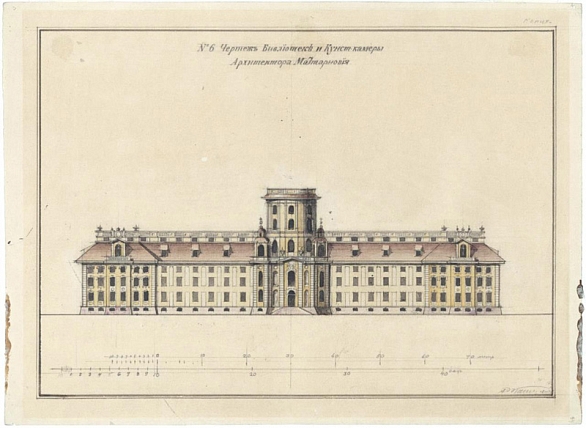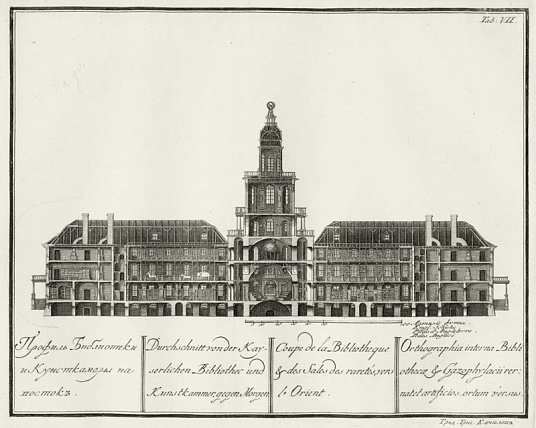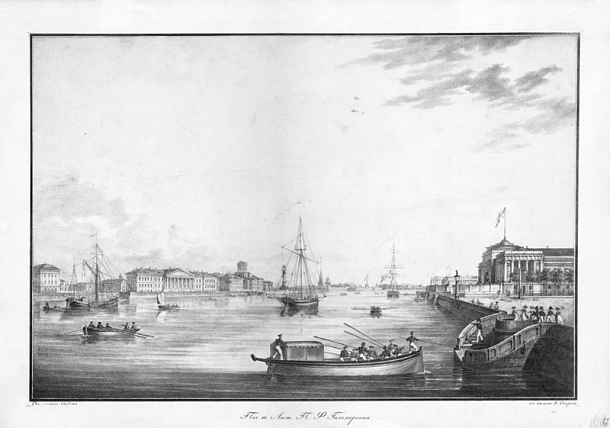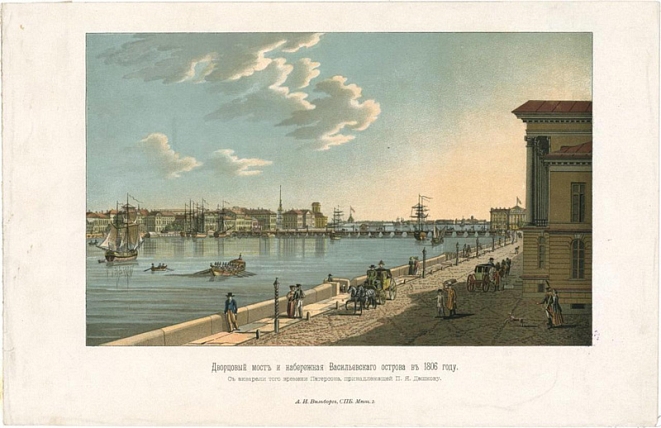- Visit Us Safely
- Opening Hours
- Getting Here
- Admission and Tickets
- Exhibitions
- Virtual 3D Tour
- Kunstkamera Mobile Guide
- History of the Kunstkamera
- The Kunstkamera: all knowledge of the world in one building
- Establishment of the Kunstkamera in 1714
- The Kunstkamera as part of the Academy of Sciences
- The Kunstkamera building
- First collections
- Peter the Great's trips to Europe
- Acquisition of collections in Europe: Frederik Ruysch, Albert Seba, Joseph-Guichard Duverney
- The Gottorp (Great Academic) globe
- Siberian expedition of Daniel Gottlieb Messerschmidt
- The Academic detachment of the second Kamchatka expedition (1733-1743)
- 1747 fire in the Kunstkamera
- Fr.-L. Jeallatscbitsch trip to China with a mission of the Academy of Sciences (1753-1756)
- Siberian collections
- Academy of Sciences' expeditions for geographical and economic exploration of Russia (1768-1774)
- Research in the Pacific
- James Cook's collections
- Early Japanese collections
- Russian circumnavigations of the world and collections of the Kunstkamera
- Kunstkamera superintendents
- Explore Collections Online
- Filming and Images Requests FAQs
Architects of the Kunstkamera
The famous European architect Andreas Schlüter launched the construction of the Kunstkamera building, but he only prepared a sketch project. Many Kunstkamera historians tend to believe that Peter the Great took part in the planning of the building, that he picked the construction site and authored the idea of how to arrange the halls for the library and collections of various types. Peter’s concept allows us to speak of a philosophical view of the organization of the museum, which was to represent a kind of microcosm.
During Peter the Great’s lifetime, only the walls were built. The tsar donated a so-called “cabinet,” i.e., his own funds for the construction. Initially, the architect Georg-Johann Mattharnowy supervised the construction. He later developed a new building project. Mattarnovi started the construction of the Kunstkamera (1718-1719) but did not complete it. After his death, from 1719 to 1724, the works were supervised by the architect N.F. Herbel. Under Herbel, the appearance of the building slightly deviated from the original design: the galleries appeared, and the treatment of the window openings, laid out in brickwork and preserved to this day, was more ornate than it was indicated in the drawing. By the time of Gerbel’s death in 1724, the building was finished in rough detail: the tower was unfinished, and cracks in the walls endangered the safety of the building.
The architect Gaetano Chiaveri (1724-1727), who succeeded Herbel, dismantled the tower and drew up a new design for the building. Comparing the engravings with the architectural plans of Chiaveri and Mattarnovi, we can notice that the lower part of the tower became higher. A light colonnade appeared instead of four pavilions around the tower’s cylinder, which Mattarnovo had intended to build. The height of the cylindrical part increased. A belfry topped the tower with a sphere mounted on it. Over the avant-corpses on the embankment side of the facade, elegant Baroque pediments appeared instead of a modest “Mattarnovo balustrade” with a mansard window. However, Chiaveri did not finish the construction of the tower. Architect M.I. Zemtsov completed it in 1734 in accord with Chiaveri’s design.
In July 1723, architect Dominico Trezzini proposed the installation of 12 carved statues and 75 carved vases on the facade of the Kunstkamera. He offered Zemtsov to make sketches of the statues. Statues were the impersonations of allegorical figures: Astrology (from Greek astrologia – the science of the celestial luminaries), Horography (from Greek hora – hour, and grapho – to write; the art of arranging sundials), Ingenium (from Latin ingenium – ingenuity, genius, knowledge), Memoria, Medicine, Geography, Justice, Sapientia (Latin for wisdom, philosophy), Curiositas (from French curiosite – curious), Admiracis (from the Latin admīrātio – surprise, admiration), Dilientia (from the Latin diligitia – diligence), and Cientia (from the Latin scientia – science, knowledge). Of 15 figures the Academy of Sciences selected 12 by the number of façade niches. The façade of the building was decorated with statues made of linden wood by the master Koch, which stood there until the early nineteenth century.
On December 5, 1747, a great fire broke out in the Kunstkamera, which badly damaged the building and destroyed its wooden parts: the roof, the tower, and the arcade around the tower. At the beginning of 1748, a commission comprising architects Rastrelli, Trezzini brothers, and others, decided to dismantle the pediments. Architect I. Schumacher, the brother of Chancery Counselor I. D. Schumacher, prepared the estimates and started executing the project. Soon, architect Savva Chevakinsky replaced him and continued the tower’s restoration from 1755 to 1758. The armillary sphere and the belfry were lost to the fire. In 1758, Chevakinsky rebuilt the tower, but without the upper part. In this truncated form, the Kunstkamera building stood for almost 200 years. The building regained its original appearance only in 1948-1949, when the tower was crowned with the new armillary sphere design by architect R. I. Kaplan-Ingel.
By the early 1990s, after 40 years of exploitation, the armillary sphere on the tower wore out. The “Prometey” construction company worked out a design and produced a new sphere from titanium alloy installed over the Kunstkamera tower on December 28, 1993. The building once again became an architectural landmark of our city, a symbol of St. Petersburg, the city of science, echoing other symbols of our city – the spire of the Peter and Paul Fortress and the Admiralty Needle.







